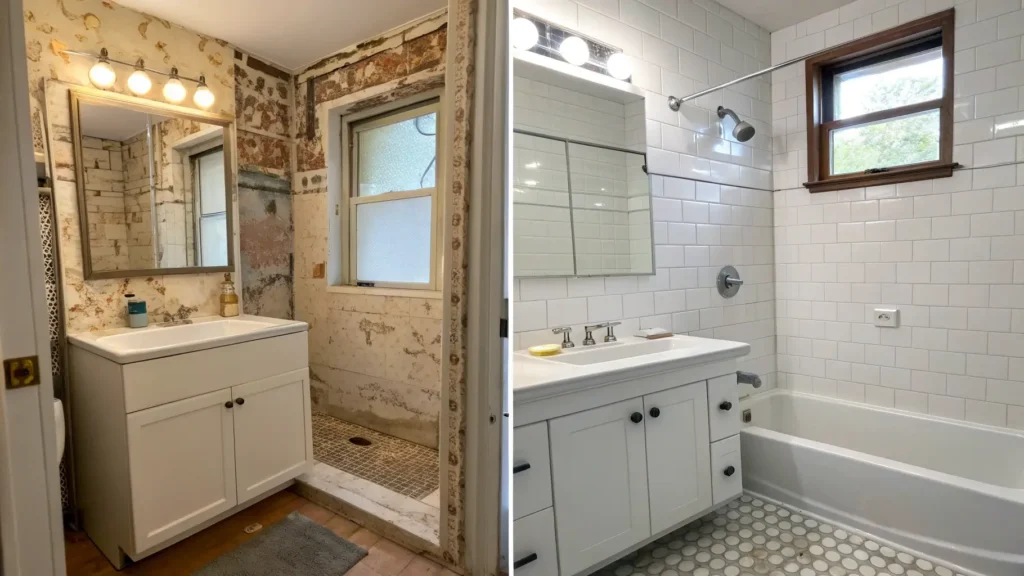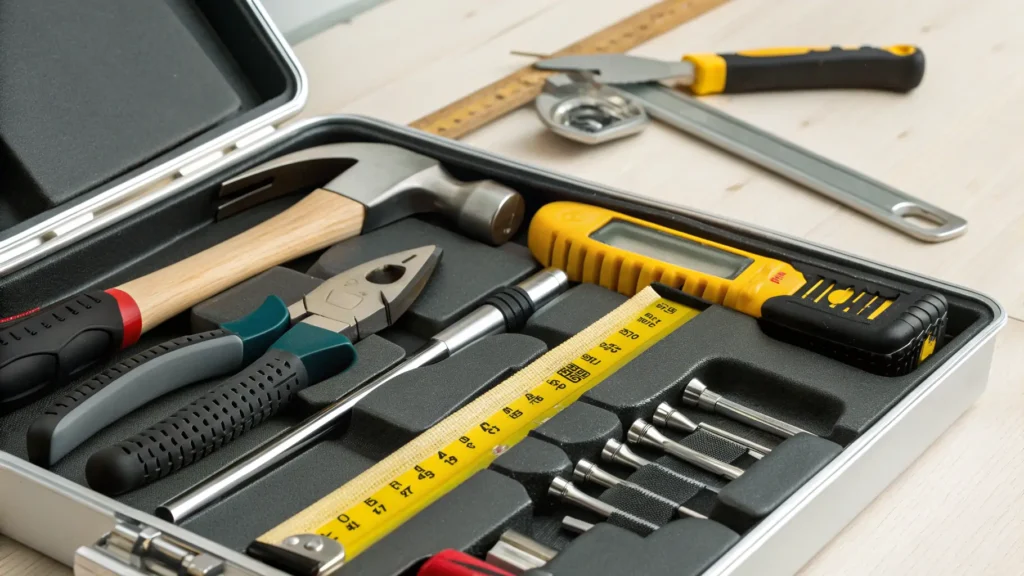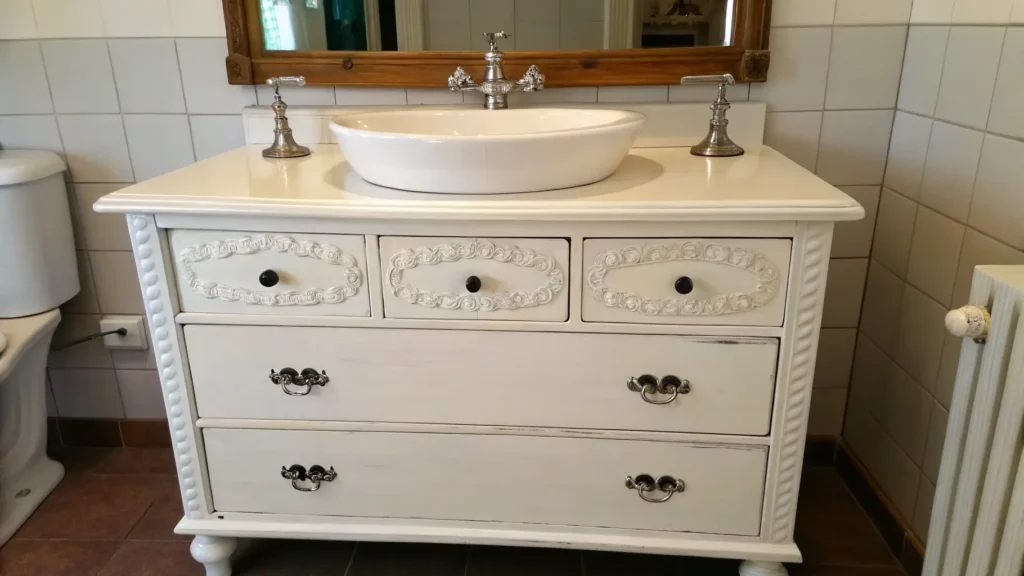Unlock Your Home’s Potential with DIY
Imagine stepping into a home that perfectly reflects your style, feels brand new, and didn’t break the bank to achieve. That’s the power of DIY home improvement. Whether you dream of a vibrant accent wall, a smart kitchen upgrade, or a complete outdoor transformation, embracing do-it-yourself projects empowers you to shape your living space. From increasing property value to saving significantly on labor costs, the benefits are immense.
Take Sarah, a homeowner who turned her dated bathroom into a spa-like retreat on a limited budget. With a fresh coat of paint, new fixtures, and a DIY vanity update, she transformed the space, adding both personal satisfaction and significant value.

This definitive guide is your comprehensive roadmap to undertaking smart, sustainable, and value-driven home improvement DIY projects. We’ll equip you with the knowledge, tools, and confidence to tackle any task, no matter your skill level. Get ready to unlock your home’s true potential and experience the profound satisfaction of creation.
TABLE OF CONTENTS
The Foundations of Smart DIY: Planning, Tools & Safety
Embarking on any DIY home improvement journey requires a solid foundation. Proper planning minimizes costly mistakes, the right tools simplify tasks, and unwavering safety precautions protect you. This section lays out the essential groundwork for every successful project.
Comprehensive Project Planning
Thoughtful planning is the cornerstone of successful home improvement DIY. Before lifting a single tool, consider these vital steps:
- Define Your Goals: What do you want to achieve? A fresh look, increased functionality, or boosted resale value? Clear objectives guide your decisions.
- Thorough Research: Explore design ideas, material options, and “how-to” guides. Understanding the scope is crucial.
- Realistic Budgeting: Account for materials, tools, potential unexpected costs, and a contingency fund. Don’t forget disposal fees!
- Timeline Creation: Break down your project into manageable phases with realistic deadlines. Overestimating time can lead to burnout.
- Understanding Local Regulations: Check if your project requires permits or adheres to specific building codes. Ignorance is no excuse.
A Universal Checklist of Essential DIY Tools
Having the right tools is paramount. While advanced projects might require specialized equipment, a core set of tools will serve you well for most DIY home upgrade ideas.
- Beginner Essentials:
- Measuring tape, pencil, and utility knife.
- Hammer, screwdriver set (Phillips and flathead), adjustable wrench.
- Pliers, level, caulk gun.
- Safety glasses, gloves, dust mask.
- Intermediate Additions:
- Cordless drill/driver with various bits.
- Hand saw (e.g., jab saw, miter box saw).
- Sanding block or electric sander.
- Stud finder, pry bar.
- Advanced Investments:
- Circular saw or miter saw.
- Jigsaw, oscillating multi-tool.
- Wet/dry vacuum, painting sprayer.

Paramount Safety Precautions and Gear
Safety is non-negotiable in DIY home improvement. Always prioritize your well-being.
- Personal Protective Equipment (PPE): Always wear safety glasses, work gloves, and closed-toe shoes. Consider a dust mask or respirator for dusty work, and ear protection for noisy tasks.
- Tool Handling: Read manuals before using new tools. Keep blades sharp and cords untangled. Never force a tool.
- Work Area: Ensure your workspace is well-lit, clear of clutter, and well-ventilated.
- Electrical Safety: Turn off power at the circuit breaker before working on electrical components. Use a non-contact voltage tester to confirm.
- Ladder Safety: Use sturdy ladders on level ground. Maintain three points of contact.
Discover Your Next Project: Categorized by Skill Level
One of the biggest hurdles in DIY home improvement is knowing where to start. This section guides you through projects specifically tailored to your comfort and expertise, ensuring a rewarding experience every time.
Beginner-Friendly Transformations (Quick Wins)
These easy DIY projects for beginners are perfect for building confidence and seeing immediate results. They often require minimal tools and offer high satisfaction.
- Painting a Room: A fresh coat of paint can dramatically change a space.
- Installing Floating Shelves: Adds storage and visual interest with basic tools.
- Upgrading Cabinet Hardware: Instantly modernizes kitchens or bathrooms.
- Creating a Gallery Wall: Personalizes a space with art and photos.
- Weatherstripping Doors and Windows: A simple yet effective energy-efficient upgrade.
Intermediate Upgrades (Weekend Warrior Projects)
Ready for a bit more challenge? These intermediate DIY tasks might take a weekend or two but offer significant visual and functional impact.
- Tiling a Kitchen Backsplash: Requires precision but transforms the kitchen‘s aesthetic.
- Installing a New Faucet or Showerhead: Can drastically improve water pressure and modern appeal.
- Building Custom Storage (e.g., Mudroom Bench): Adds functionality and organizational solutions.
- Refinishing Furniture: Breathing new life into old pieces with sanding, staining, or painting.
- Minor Landscaping Enhancements: Creating garden beds, installing pathway lighting, or planting shrubs.
Advanced Projects & Major Renovations (Expert Challenges)
For seasoned DIYers or those willing to invest time in learning new skills, these advanced home projects offer the most transformative results.
- Installing Hardwood or Laminate Flooring: A big project with a massive impact on home value.
- Framing and Drywalling a New Wall: Creates new spaces or reconfigures existing layouts.
- Building a Deck or Pergola: Expands outdoor living space.
- Kitchen Cabinet Refacing: A more involved upgrade than just hardware, changing the entire look.
- Bathroom Vanity Installation with Plumbing: Requires comfort with both carpentry and basic plumbing.
Maximizing Home Value: Budget-Friendly & High-ROI DIY Upgrades
Every homeowner wants their efforts to count, especially when it comes to resale value. This section focuses on budget home improvements and DIY projects to increase home resale value that offer the best return on investment (ROI). You don’t need to spend a fortune to significantly enhance your property’s appeal and worth.
Understanding “Return on Investment” (ROI) in Home Improvements
ROI measures the financial benefit you gain from an investment, relative to its cost. For home improvement DIY, it means choosing projects where the added value to your home outweighs the money and time you put in. Focusing on universal appeal and functional improvements typically yields the highest ROI.
Curated List of High-Impact, Low-Cost Projects
Here are some of the best budget DIY home improvements to increase value:
- Boost Curb Appeal:
- Exterior Painting: A fresh exterior can offer a 141% ROI.
- Landscaping: Simple planting, mulching, and edging make a huge difference.
- Front Door Upgrade: Painting your front door or replacing hardware can significantly impact first impressions.
- Interior Refreshers:
- Painting Interior Walls: Continues to be one of the cheapest and most effective upgrades.
- Updating Light Fixtures: Modernize the look and feel of any room.
- Minor Kitchen/Bathroom Facelifts: Re-caulking, re-grouting, or a new backsplash.
- Energy Efficiency:
- Insulating the Attic: Can significantly reduce energy bills and offers high ROI.
- Sealing Air Leaks: Using caulk and weatherstripping improves home comfort and efficiency.
Smart Shopping Strategies for Materials
Saving money on materials directly boosts your project’s ROI.
- Thrifting & Salvage: Explore architectural salvage yards or online marketplaces for unique, high-quality items at a fraction of the cost.
- Sales & Discounts: Time your purchases during holiday sales or end-of-season clearances.
- Bulk Buying: For larger projects, buying materials in bulk can reduce per-unit costs.
- Compare Prices: Don’t settle for the first quote. Check multiple suppliers for the best deals on lumber, paint, and fixtures.
DIY vs. Professional Costs for Common Projects
Understanding when to DIY and when to hire a pro is key to maximizing savings. For instance, painting is almost always cheaper as a DIY, saving 70-80% on labor. Installing a new toilet might save you 50% vs. hiring a plumber. However, complex electrical or structural work almost always warrants a licensed professional for safety and compliance.
Our Unique Angle: Our “Upcycling & Repurposing Spotlight” features case studies of homeowners who transformed discarded items into valuable home assets, demonstrating maximum savings and creativity.

The Modern Edge: Sustainable & Smart Home DIY
The future of home improvement DIY is green and smart. This section explores cutting-edge ways to make your home more eco-friendly and technologically advanced, often with accessible DIY solutions. These areas are often overlooked by conventional guides, offering unparalleled value.
Introduction to Eco-Friendly Material Choices
Building sustainably means selecting materials that minimize environmental impact.
- Recycled Content: Look for products made from recycled glass, plastic, or wood.
- Low VOC (Volatile Organic Compounds): Choose paints, sealants, and adhesives with low or zero VOCs to improve indoor air quality.
- Sustainable Sourcing: Opt for FSC-certified wood (Forest Stewardship Council) ensuring responsible forest management.
- Natural Materials: Utilize bamboo, cork, or natural linoleum for flooring and finishes.
Strategies for Waste Reduction During Projects
Minimize your project’s footprint by reducing waste.
- Precise Measurement: “Measure twice, cut once” is crucial to avoid material waste.
- Buy Only What You Need: Resist the urge to overbuy, especially for small projects.
- Donate Leftovers: Unused paint, lumber, or tiles can often be donated to local charities or reused on other projects.
- Recycle & Compost: Separate recyclable materials (cardboard, metal) from general waste. Consider composting organic waste.
Energy-Efficient DIY Upgrades
Save money and reduce your carbon footprint with these sustainable DIY home upgrades.
- Advanced Weatherstripping & Sealing: Go beyond basic weatherstripping to seal all gaps and cracks around windows, doors, and utility penetrations.
- Smart Thermostat Installation: Easy to install and can significantly optimize heating and cooling, saving energy.
- Insulation Enhancements: Add extra insulation to your attic or crawl spaces.
- LED Lighting Conversion: Replace old incandescent bulbs with energy-efficient LEDs throughout your home.
Accessible Smart Home Technology Installations
Bringing your home into the future doesn’t require an electrician for every device. Many smart home DIY integrations are user-friendly.
- Smart Lighting: Replace existing light switches or bulbs with smart versions that can be controlled via apps or voice commands.
- Smart Plugs: Turn any appliance into a smart device by plugging it into a smart outlet.
- Security Systems: Install DIY smart cameras, door/window sensors, and video doorbells for enhanced home security.
- Smart Blinds/Curtains: Automate your window coverings to optimize natural light and insulation.

Troubleshooting, Resources & When to Call a Pro
Even the most meticulous planning can’t prevent every hiccup. This section prepares you for common DIY home improvement challenges and guides you towards reliable solutions, ensuring you complete your projects safely and successfully. Knowing when to tackle a problem yourself and when to defer to an expert is crucial for both safety and quality.
Common DIY Mistakes and Actionable Prevention Tips
Avoid these frequent pitfalls to keep your project smooth:
- Skipping Prep Work: Not cleaning, sanding, or priming surfaces properly before painting leads to poor finishes. Prevention: Always follow manufacturer prep instructions.
- Inadequate Measuring: “Eyeballing” cuts or relying on approximate measurements results in wasted materials and frustrating rework. Prevention: Measure at least twice, and use a reliable measuring tool.
- Ignoring Safety Gear: Forgetting safety glasses or gloves can lead to preventable injuries. Prevention: Have all PPE ready and use it consistently.
- Underestimating Time & Cost: Leads to rushed work, budget overruns, and frustration. Prevention: Build in contingency time and money (10-20% extra).
- Lack of Research: Jumping into complex tasks without understanding the process can be disastrous. Prevention: Watch tutorials, read guides, and ask for advice before starting.
Troubleshooting Guide for Frequent Project Issues
- Paint Streaks/Drips: Ensure even application, don’t overload your brush/roller, and allow proper drying time between coats.
- Uneven Cuts: Check your saw blade, secure your workpiece, and ensure your guides are straight. Practice on scrap wood.
- Loose Screws/Stripped Holes: Use the correct drill bit size for pilot holes. For stripped holes, use a larger screw, wood filler, or a wall anchor.
- Wobbly Furniture/Structures: Double-check all connections, ensure joints are square, and add bracing where necessary.
Curated List of Reliable Online DIY Communities and Video Tutorials
Never feel alone in your home remodeling projects. The online DIY community is a vast resource:
- YouTube Channels: Search for specific “how-to” videos for virtually any project (e.g., “how to tile a floor”). Look for channels with clear instructions and good production quality.
- DIY Forums & Subreddits: Websites like Reddit’s r/DIY or r/HomeImprovement offer communities where you can ask questions and get advice from experienced users.
- Manufacturer Websites: Many tool and material manufacturers provide detailed installation guides and troubleshooting FAQs.
Clear Criteria for When to Engage Licensed Professionals
While this guide empowers you, some tasks are best left to licensed experts.
- Electrical Work Beyond Simple Fixtures: Anything involving circuit breakers, new wiring, or major panel upgrades should be handled by a licensed electrician.
- Plumbing Work Beyond Minor Repairs: Major pipe replacements, water heater installation, or anything involving gas lines requires a licensed plumber.
- Structural Changes: Removing load-bearing walls, adding new foundations, or major roofing work needs a structural engineer and licensed contractor.
- Permit-Required Projects: If your project requires a permit, it often means specific expertise is needed to ensure compliance and safety.
- Hazardous Materials: Dealing with asbestos, lead paint, or extensive mold remediation requires specialized professional services.
Fix It Fast: 20+ Genius Repairs with Household Items
Conclusion: Your Transformed Home Awaits
You now hold the definitive blueprint for embarking on your own DIY home improvement journey. We’ve explored everything from meticulous planning and essential tools to maximizing ROI, embracing sustainability, and integrating smart home technology. We’ve even equipped you with strategies for overcoming common challenges and knowing when to call in the professionals.
The benefits of home improvement DIY extend far beyond cost savings; they encompass the pride of creation, the joy of a personalized space, and the significant boost in your home’s value. Every brush stroke, every measured cut, and every new fixture installed contributes to a home that truly feels like yours. As renowned designer Nate Berkus famously said, “Your home should tell the story of who you are, and be a collection of what you love.”
Don’t let hesitation hold you back. Start small, build your skills, and let your creativity flourish. Your transformed home, a testament to your vision and effort, is waiting. Start your first DIY home improvement project today and begin writing your home’s unique story.
